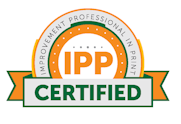 If I were there in person, you might say, “I know what my wastes are. Waste is something you throw away or a spill you clean up.” Others might say, “Waste is the excess material created as a result of stamping out a product part; it’s paper waste from the office or it’s waste from getting a printing press up to the right color.”
If I were there in person, you might say, “I know what my wastes are. Waste is something you throw away or a spill you clean up.” Others might say, “Waste is the excess material created as a result of stamping out a product part; it’s paper waste from the office or it’s waste from getting a printing press up to the right color.”
Some wastes have been a part of your operations for so long that you’re used to them. You don’t even consider them wastes. Instead, they’re just part of the, “this is how we’ve always done it,” attitude, usually followed by a comment that projects are estimated at a higher cost and products are listed at a higher price, just in case.
Many companies who have been working on process improvement can identify the seven major areas of waste: Transportation (unnecessary moving), excess or useless inventory, motion (moving or handling things), waiting time, over processing, overproduction, and defective parts.
Companies work to delete the above-mentioned wastes and cut costs by eliminating employees. They ask those that remain to do more with less. But they don’t see the greatest and most damaging waste – underutilization of their employee talents and passions. As a result, according to a Gallup poll, 50 % of employees are not engaged at work, and 20% are actively disengaged. This disengagement costs the US $450 billion to $550 billion annually. That’s a big waste! So, what can you do to eliminate this waste? Steven Covey said, “You may be able to ‘buy’ a person’s back with a paycheck, position, power or fear, but a human being’s genius, passion, loyalty, and tenacious creativity are volunteered.” So let’s look at how you can eliminate that waste and enjoy greater creativity, profits, and customer and employee satisfaction.
As I mentioned in a previous post, employees are not widgets. And they are not items to be randomly eliminated when looking to cut costs. Their brains, their passion, and their creativity need to be developed and nourished. The transformation of your organization and customer satisfaction and employee satisfaction depends on their engagement in their work. To engage them, you need to treat them as an asset and invest in their development just as you invest in any other asset in your company.
To begin, you need excellent employees. How do you develop excellent employees? First, assess the current staff and ensure they have the tools and training to perform standard work for their positions. Your supervisors or team leaders need to have conversations with them to ensure they want to work and to do the tasks in their standard work. You also need to provide challenges and job enriching activities for them to grow. I agree with Herzberg’s theory that employees need to perform a whole piece, one that they can identify with as a product of their efforts.
Next, take a walk around and examine the culture in your company. To develop a successful culture, certain core values must form the foundation and provide the guidelines for the behavior and decisions of everyone in the company from the CEO down. These guidelines include ethics, integrity, and moral values. Ethics include not only company guidelines but also everyone’s internal compass. Ethical behavior is moral values in action. Integrity is to hold oneself to consistent moral and ethical standards.
Quality and continuous improvement cannot succeed without ethical behavior and integrity on the part of the employee and the company. That means both sides must act with honesty, fairness, values, and morals. They stick to the facts, and they are sincere in their communication.
Don’t think that investing in your employees and developing a company culture is a waste. In fact, just the opposite is true. It’s a waste of a valuable resource when you don’t invest in them. Have patience. It takes time to see results and to develop trust. When employees see that you and your management staff do what they say and manage with integrity, they will learn to trust. When you see that you can trust the employees, you can empower them. You will see them grow as they continuously take risks to improve your products and processes. Trust also means that your employees feel the evaluation and the measurement processes are fair across the whole company. One group is not held to a different standard. Trust also means that everyone is doing their personal best to bring quality products and services to customers.
Since my background is in training, I am committed to providing quality training in skills and processes as well as professional development. Standard work processes ensure there are both uniformity and an endpoint objective for training. Employees must also learn problem-solving and decision-making skills to function effectively in an empowered quality team. Quality process training provides the guidelines and the tools for how your employees will work.
Clear, effective communication with your most valuable asset, your employees, is critical to your success. The sender and receiver must both have a common understanding of the message. It involves not only the right words but also the right tone, body language, facial expressions, and gestures. When done correctly, everyone feels respected and valued for their contributions. Employees will feel safe and connected. They feel pride in working where they are valued. Thus they will feel comfortable communicating valuable insights and suggesting improvements. Everyone needs to work on their communication skills so that they can motivate employees with different needs. Effective communication also helps to eliminate conflict and drama in the workplace.
Finally, recognize teams and individuals for their achievements and their suggestions. One of the key elements in creating an environment where employees are inspired motivated and flourish is celebration and recognition. Encouraging, motivating, and inspiring employees is achieved by capturing their hearts and minds and making them feel like heroes. Employees want to feel they are contributing to the success of the company and their job is integral to it. They also want to feel that their contribution is recognized and appreciated. Remember, employees are a valuable asset, so again, treat them as you would any other valued asset.
Next Post
Look for my next blog post when I will discuss recognition and showing appreciation in the workplace. In the meantime, I highly recommend Shawn Achor’s Youtube video https://www.ted.com/talks/shawn_achor_the_happy_secret_to_better_work. Shawn is an expert on the topic, and he provides an entertaining presentation.
About the Author: Phyllis Mikolaitis is a sales coach, author, and speaker with over 30 years’ global experience. She is dedicated to taking you beyond the typical “how to” courses to the heart of persuasion techniques incorporating insights and stories to win the sale. Phyllis has also had training in Leadership Through Quality, Six Sigma and is now working with organizations on Lean and People-Centered Leadership. Visit Phyllis and her business partner John Switzer on other pages on this site www.salestrainingsolutions.com.

Ezine Platinum Author
Certified Improvement Professional in Print


